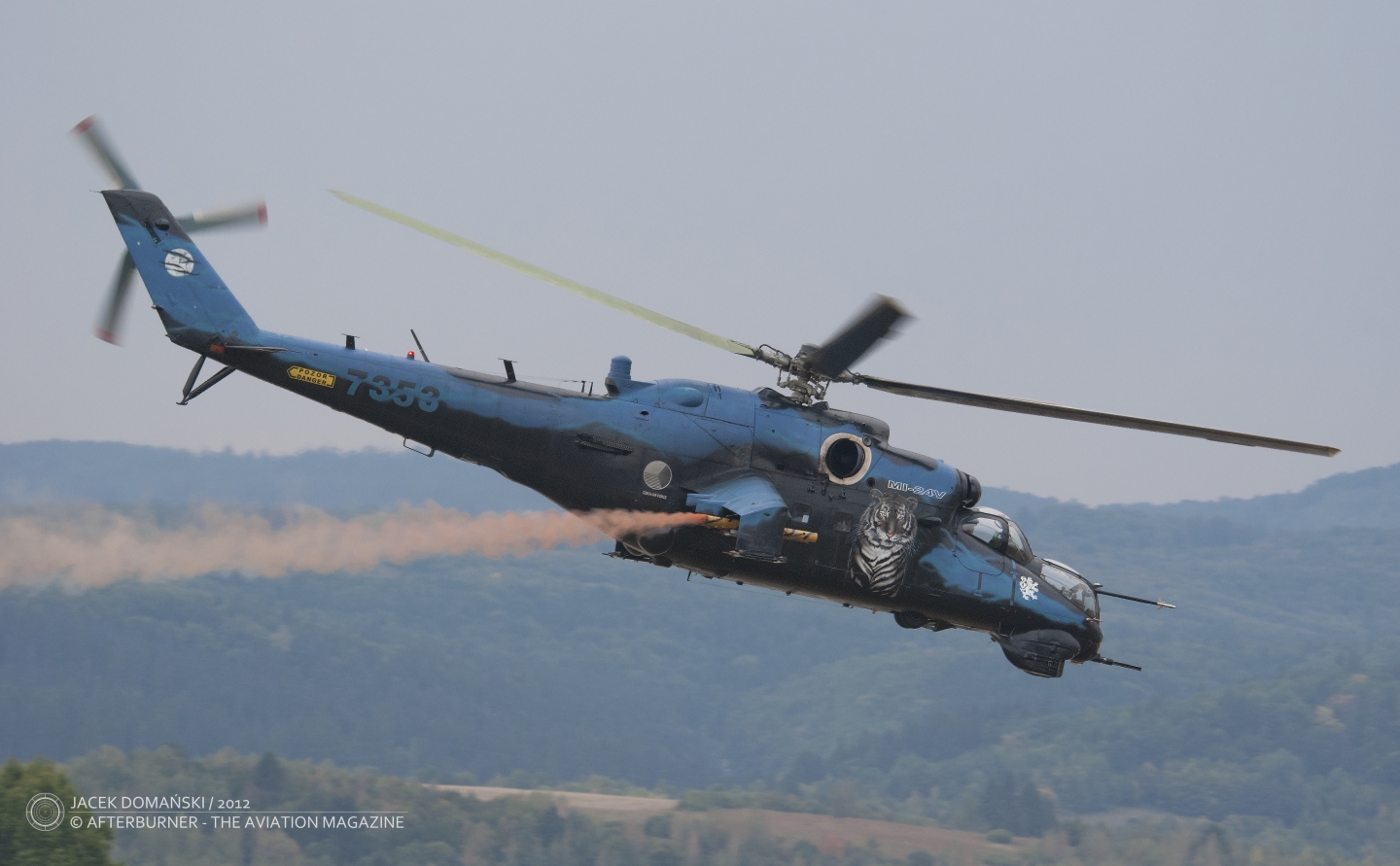 Pilatus PC-9M Hudournik (c/n 639, L9-66 of Zračna komponenta Slovenska vojska / Air component of the Slovenian Armed Forces), static display during the 32nd edition of Aviatická pouť air show, Pardubice, June 2024.
Pilatus PC-9M Hudournik (c/n 639, L9-66 of Zračna komponenta Slovenska vojska / Air component of the Slovenian Armed Forces), static display during the 32nd edition of Aviatická pouť air show, Pardubice, June 2024.
On 12th April 1966, the Pilatus aviation company opened its era of turboprop trainers with the maiden flight of PC-7. The aeroplane was developed from the previous concept, a successful PC-3 training aircraft from the early 1950s.
In a short time, the PC-7 achieved global commercial success, being built in more than six hundred examples and acquired by approximately twenty air forces all over the world. Over the next two decades, the PC-7 evolved along with development of military aviation, responding to changes in customers´ requirements and introduction of new types of fighter aircraft.
However, in the early 1980s, it became clear for Pilatus that the PC-7 development capabilities are limited and the market would soon need a completely new training aeroplane.
Therefore, in response to this demand, in 1982 the Swiss aviation company launched works on the new trainer, designated PC-9. Although the new aeroplane was similar in appearance to its predecessor, it was a new design featuring more advanced flight characteristics.
The PC-9 was equipped with redesigned cockpit and canopy, with two ejection seats mounted in stepped configuration for better view from the rear position. The nose and engine section of the aircraft were also redeveloped, and the PC-9 was equipped in Pratt & Whitney Canada PT-6A-62 turboprop engine, generating 1,150 hp but derated to 950 hp (twice as powerful, comparing to the PC-7).
On 7th May 1984, the PC-9 successfully performed its maiden flight. The new training aircraft was marketed by the Pilatus company as the versatile aeroplane, capable to cover a broad range of tasks, from initial training, through aerobatics to weapon drill. In addition, the PC-9 was capable of covering all stages of military pilot´s training, as well as allowed to skip the intermediate stage, therefore significantly reducing the cost of training.
Serial production of the PC-9 commenced in 1985. Although its initial sales were difficult, and Pilatus lost the expected contract for new Royal Air Force training aircraft, soon the aeroplane found its customers among about fifteen air forces from all over the world. A few examples were also sold to civilian operators, however also providing training services for various air forces.
In the early 1990s, Pilatus commenced cooperation with Beechcraft aviation company from the USA, to jointly develop training aircraft for the US Joint Primary Aircraft Training System. In 1995, that new aeroplane, initially designated Beech Pilatus PC-9 Mk II but then rebranded for Beechcraft T-6A Texan II, was approved as standard trainer for the USAF and the US Navy.
In 1997, the Swiss manufacturer introduced into the market an upgraded variant of the aeroplane, designated PC-9M. Apart from the standard training duties, the new version of the aircraft was equipped with six underwing hardpoints and able to perform close air support combat missions.
The air component of the Slovenian Armed Forces, commonly referred to as the Slovenian Air Force, acquired a total of eleven examples of the PC-9. In 1995, the first three examples of the standard training version were delivered. In November of 1998, the country purchased nine examples of the modernised PC-9M variant, locally named Hudournik (English: swift).
Apart from Slovenia, the upgraded PC-9M variant was also purchased by Bulgaria, Croatia, Ireland, Mexico, Oman and Slovenia (more information about the Irish PC-9M in our article – Pilatus PC-9M – twenty years of service with the Irish Air Corps).
In 1999, the Pilatus company officially introduced into the market new training aircraft, designated PC-21. Soon after, production of the PC-9 was ceased. Until that time, almost 300 examples of the PC-9 and PC-9M were manufactured, with additional 700 examples of the Texan II.
More information about the PC-21, as well as the history of Pilatus training aircraft can be found in our article from November of 2022 – Pilatus PC-21.



